All about the heliotrope stone

Precious and semiprecious stones, given to man by nature, never go unnoticed. Each of them is beautiful in its own way, almost all have amazing physical and magical properties. One of the most unusual minerals is heliotrope. It incredibly combines dark and light shades, thanks to which such a stone wants to be considered over and over again.
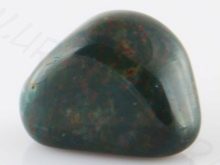
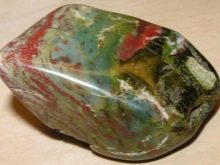

A bit of history
The initial mention of heliotrope dates back to the times of Ancient Greece. The name of the stone consists of two words: "sun" and "turn". The complete translation is interpreted in different ways, for example, "following the sun", "turning the sun". The ancient Greeks believed that this material served as the basis for the creation of the famous chariot of the sun god Helios.
In addition, it was widely believed that the heliotrope could cause thunder and rain, or cause the sun to peek out from behind the clouds.


The heliotrope was also popular in Mesopotamia, where it was called the Babylonian stone, and in ancient Rome and in Egypt. In those days, the stone was considered the most powerful magical amulet and was preferred to be worn under clothing. Such a mineral was intended to protect from slander, evil tongues, and also strengthened the intuition and natural charm of the wearer. It is noteworthy that this stone was not only loved, but also feared. Unusual shades of heliotrope, as well as blood-red blotches in the depths of the stone itself, inspired even influential persons with the idea that this gift of nature should not be angered.


Another popular legend of the origin of heliotrope tells that this mineral is nothing more than an ordinary stone.The road passing through the place of Jesus Christ's execution was paved with these cobblestones. And the red spots that are inside the stone are divine blood that fell on the cobblestones during the crucifixion.... This legend is very common to this day, which is why so often in churches you can see objects made of heliotrope.
It is believed that this stone gives magical and healing characteristics to any thing.

Description
Heliotrope is a natural stone that belongs to the group of quartz. It originates in lava flows. During a volcanic eruption, high temperature lava slowly flows down the slopes of the mountain. All this is accompanied by a strong smell of sulfur and ash emissions. If there is a reservoir at the bottom of the mountain, then, in contact with water, magma instantly lowers the temperature, because of which voids begin to form in it. It is in these voids that stones are formed, which are called heliotropes. Therefore, such natural materials are sought near active and extinct volcanoes, on the banks of rivers and lakes near the "sleeping giants". In addition, heliotrope can also form in a hydrothermal vein, which is also directly related to volcanoes.


It is rather difficult to describe heliotrope in the most accurate way, and all thanks to the abundance of shades found in the stone. The mineral may contain different components: iron, quartz, agate, chalcedony. The dominant component determines the color of the blotches. Connoisseurs of semi-precious stones will be interested in the fact that it is impossible to find two identical heliotrope in nature, each stone is unique in its own way. The main color of heliotrope is green, but sometimes blue-green stones, and light, and almost black are found. Inside the mineral, blotches of various colors: crimson, bright red, orange, are frozen in a chaotic manner. Blotches of hematite have a more intense, darkish color.
Plasma is considered to be especially valuable - it is a stone with yellow streaks, "blots" and dots.
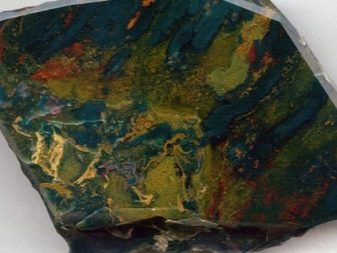

There is no definite classification of heliotrope shades; any stone has its own color. The stone can have many shades, which is why it is often compared to jasper and bloodstone. Nevertheless, despite the similarities, there are still differences. For example, bloodstone has fewer blotches, while green jasper has light streaks of almost regular shape. But the phrase "blood jasper", which can often be found among jewelers, is the second name for heliotrope.
The gem received this nickname for two reasons: it looks like jasper and has red blotches, which many associate with blood.


Heliotrope is never transparent, mostly it is a monolithic or translucent rock. If you polish it, a characteristic shine appears, otherwise the stone looks like waxy. It looks like an octagon or an oval. As a rule, no other forms are found in the stone. It is worth noting that the mineral is quite durable, withstands high temperatures and hydrochloric acid. However, any scratches and chips are clearly visible on it, which are easy to apply with improper wear and care.

Place of Birth
The first origins of heliotropes were found in India and Egypt. There are also stone deposits in Australia, China, Central Asia, Brazil. A large accumulation of heliotropes is located in Wyoming, USA. In addition, significant deposits were discovered in Russia, in the Urals.
This deposit continues to supply large, beautiful heliotropes to this day, which are successfully exported to other countries of the world.

There is also a small accumulation of minerals in Uzbekistan, on the territory of the former Soviet Union. Interesting fact: the deposit does not have to be large and rich in stones to get a quality sample. The overwhelming amount of heliotrope of stunning beauty is extracted from small deposits. Such stones are rare and are highly prized by jewelers and those who are involved in the occult sciences.
Healing and magical properties
Of course, at the first glance at the heliotrope, it becomes clear that this stone is far from simple. The combination of shades bewitches the eye, forcing one to dive deeper and deeper into the depths of the stone in search of hidden meaning. And the varied form of inclusions, which can be any, only enhances the impression of the stone.
But heliotrope is famous not only for its external beauty, it also has incredible properties, not only healing, but also magical.

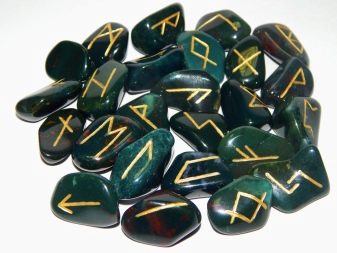
Therapeutic
The fact that heliotrope can be used to treat many diseases was noticed by doctors of ancient times. For example, it was believed that this mineral is able to stop bleeding in the shortest possible time. And thanks to the presence of iron in the composition, the stone could well cleanse the blood of toxins and toxins.... Such studies were carried out even before our era.

Much later, in the 16th century, jewelers specially cut the heliotrope, giving it the shape of a heart. It was believed that if you wet a stone in ice water and hold it in your hand, it will allow you to quickly heal even the most dangerous wound. But in Europe, medieval doctors crushed heliotrope and mixed it with honey.
The resulting ointment was applied to abscesses, abscesses, abscesses. All this contributed to a speedy recovery.


In modern times, these methods, of course, have long outlived their usefulness, but to this day many medicinal properties are attributed to heliotrope. "Blood jasper" is advised to acquire those who have long suffered from heart and vascular diseases, because this mineral will accelerate blood circulation, allowing all organs to function normally. It also helps with improper metabolism. In addition, the mineral is able to strengthen the immune system, help in solving problems with female diseases, relieve pain during heavy menstruation, and establish a cycle. It effectively cleanses the body of all harmful substances, adjusting the functioning of the bladder, liver, kidneys and stomach.
Heliotrope will also help those who often suffer from stress or are prone to depression. And he is also famous for being able to improve relationships between people, especially between a mother and her child.


Magical
Ancient sorcerers, who could not imagine their life without the occult sciences, were the first to notice such a stone as a heliotrope. The more it was used, the more unique properties were found in the gem. Magicians acquired unique pendants, rings or bracelets with heliotrope, and also wore a simple raw stone, hiding it in bags or pockets. It was believed that the wearer's magical power grows day by day if a magical gem accompanies him everywhere.
Alchemists were also interested in stone. With his help, they tried to comprehend the laws of the universe and answer many questions related to the universe.

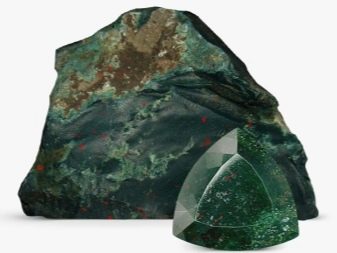
Despite the fact that the mineral won such a strong love among magicians, the priests also did not fail to take advantage of its miraculous properties.
Heliotrope began to be often found in church symbolism: in the decoration of goblets, frames for icons, candlesticks. Many clergymen acquired rings and crosses with this gem. Today, you do not need to be a sorcerer or a priest to fully experience the natural magic of the stone. The one who wears the heliotrope becomes more spiritually developed, reaches heights in his career, successfully fulfills plans and moves towards the intended goals... To do this, you only need one thing - to know what you need to achieve, and already have a sense of purpose or at least a great desire to develop it. From this it should be concluded that heliotrope is best acquired by people with fortitude.


The gem will also help those who want to improve and strengthen their knowledge.
The stone will be especially useful for people who strive for sciences with many questions and controversial points: medicine, psychology, philosophy.But here you should be more careful, since there is also a flip side of the coin: the stone will act in such a way that the craving for knowledge will begin to intensify, crossing all sorts of boundaries. The person will begin to turn into a fanatic who will not be interested in anything other than the desired knowledge. The problem can be solved in a simple way - do not wear the stone every day, give yourself and it rest.
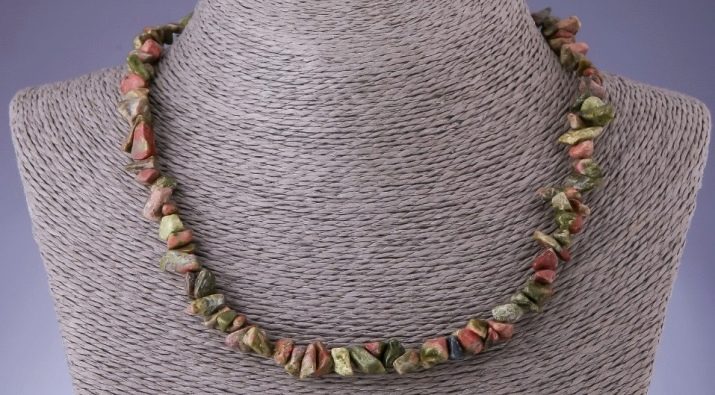
Who is it suitable for?
Blood jasper is a stone that must be chosen carefully, because it can bring not only benefits, but also harm. Before purchasing such a mineral, make sure that you are compatible with it. Consider which zodiac signs can be allowed such a purchase.
- The best compatibility with heliotrope is found in Sagittarius and Cancers. Sagittarius, the gem allows you to acquire some kind of internal energy, nobility, to clearly go towards the intended goal. Cancers become less suspicious and scandalous, they no longer want to look for a catch in every word.
- It's a good idea to get blood jasper for your Scorpio too.... Everyone knows the nature of this sign: contradictory, harsh, tough. But heliotrope softens these qualities, helping the Scorpio to become less aggressive.
- Aries gem will do. He will develop a craving for knowledge, a person will begin to strive for a goal and successfully achieve it.
- Gemini, Libra, Virgo, Pisces and Capricorns can also wear the mineral. He will reveal their best inner qualities.
- Despite the fact that heliotrope is directly related to the element of Fire, originating in lava flows, it will negatively affect the Lions, who also belong to this element. Wearing a stone, even using it for a short time, for example, a date or a meeting, can ruin a built life, start to spoil family and friendships, and hinder career growth.
- In addition, the mineral is categorically not recommended for wearing by Taurus and Aquarius. Experiments are inappropriate here, since the heliotrope is completely incompatible with these signs.

However, it is not enough just to buy an item or decoration made of blood jasper; you also need to use it correctly. For this, the following rules have been developed:
- gem rings are best worn on the index or ring fingers, and it doesn't matter which hand you usually wear the ring on;
- if you have chosen a brooch as a decoration, try to fix it closer to your heart;
- any pendants, beads or pendants should be long, it is good if they go down below the chest;
- with regard to bracelets, there are no requirements;
- You can place stones in children's rooms, as well as in areas where you spend most of the day.


Important! If we talk about feng shui, then this direction says that the best choice for location will be the eastern parts of an apartment or house. They are responsible for positive energy and family well-being.
As for combinations with other stones, then blood jasper can be combined with the following:
- turquoise;
- emeralds;
- cubic zirconia;
- White pearls;
- sapphires;
- lapis lazuli;
- coral;
- amethyst;
- cornelian.


Avoid combining heliotrope with stones such as:
- malachite;
- jasper;
- rhinestone;
- onyx;
- obsidian;
- opal;
- ruby;
- Moonstone;
- aquamarine.


How to distinguish from a fake?
It is worth noting that today it is almost impossible to find a fake blood jasper. This is due to the fact that the mineral is not in great demand, and its price is low. Therefore, it makes no sense to forge an already inexpensive material. If you want to be completely sure that you are buying heliotrope, take note of a few rules.
- This mineral shines beautifully and shimmers in the sun. It has a hard surface - if you're worried about being tricked, just swipe a needle or the sharp side of a coin over it. Not even a trace will remain on the surface of a genuine stone.
- Heliotrope is not afraid of temperatures even over a thousand degrees. To protect yourself from counterfeiting, you can heat a needle or any other metal sharp object and try to pierce the gem. If it's natural, of course, it won't work.

How to care?
Blood jasper is renowned for its hardness and immunity to high temperatures, so care for it will be minimal, namely:
- store jewelry or rough stones in boxes or caskets to protect them from falling, scratching, or pets;
- if you want to freshen up your jewelry, just dilute a little soap in water and wash the item, then rinse well with cool clean water;
- you need to wipe the bloody jasper with soft rags and towels, but paper napkins are highly discouraged;
- do not try to use detergents for glasses, tiles, bathtubs, stoves for cleaning; the components of these funds can cause irreparable harm to the stone;
- do not take heliotrope in the sauna - the stone may crack and become cloudy from the rapid temperature drop;
- if the gem is slightly cloudy or has lost its original shine, take a glass of clean water and add a teaspoon of ammonia, then wipe the surface of the stone.

Beautiful examples
Heliotrope is a stone that can be worn in different ways: in rings, bracelets, beads, pendants, earrings. Let's look at some interesting examples of such decorations.
- Bracelet and earrings with heliotrope included. Such a product looks simple and interesting due to the fact that there is a lot of green here and it appears in a variety of shades. This decoration is perfect for red-haired and green-eyed ladies.

- And this expensive set will look good under an evening dress. Earrings and a pendant of deep green, deep color are framed by silver inserts; cubic zirconia and sapphire are present here.
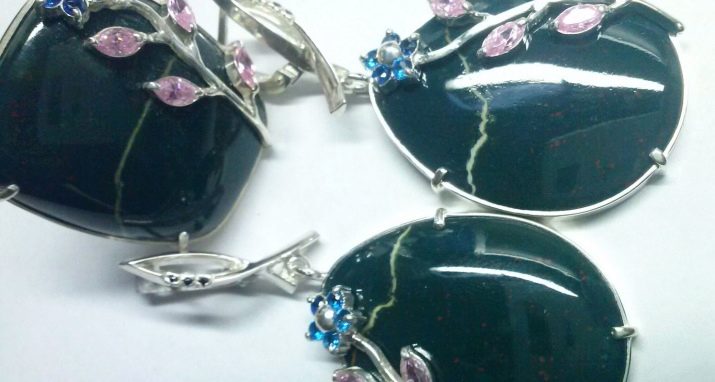
- For those who are not too fond of jewelry made from expensive stones, we recommend a heliotrope pendant. The red color, smoothly rising from below and flowing into green, immediately evokes associations with volcanoes, especially underwater ones.

- A ring similar to the previous one is also a good idea. There is less red here, but the stone itself attracts and bewitches with its depth.

- Fantasy lovers will definitely love this heliotrope and copper necklace. This handmade product is quite appropriate for everyday wear.

- Girls who like massive pieces can take a closer look at a heavier necklace option. Here the heliotrope is in a very beautiful frame, and a delicate flower is placed underneath. The abundance of various stones only adds elegance to the decoration.

The properties of the heliotrope stone are described in the next video.








